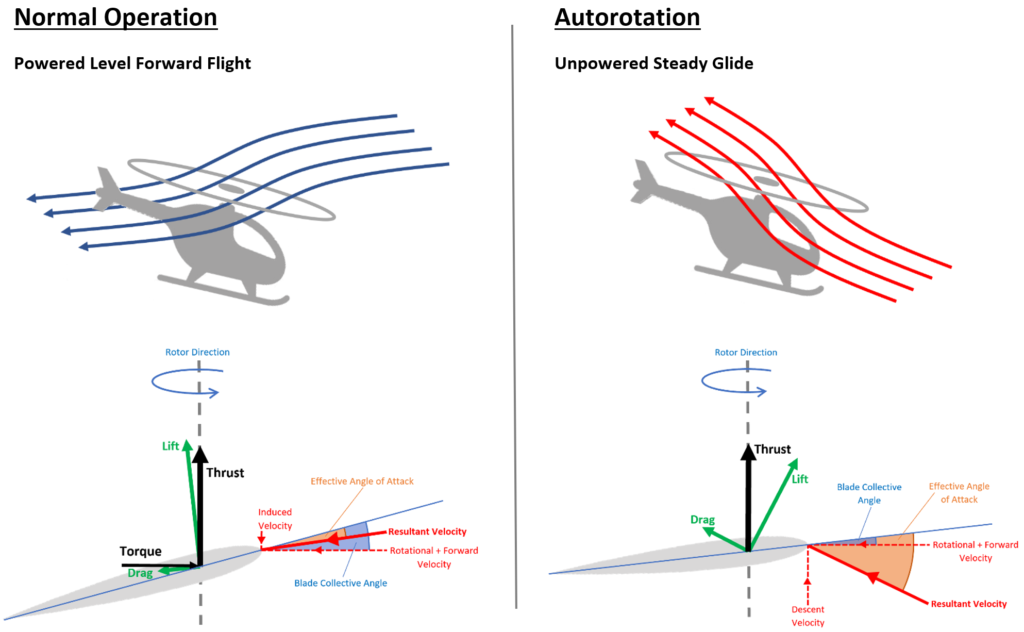Autorotation is one of the most fascinating and essential aerodynamic principles in helicopter flight. It refers to a condition where the main rotor of the helicopter is driven not by the engine, but by upward airflow passing through the rotor blades. It plays a critical role in ensuring a safe landing during engine failure. Let’s break it down in a simple and visual way.
🌀 What is Autorotation?
Autorotation is a state of flight where the helicopter’s engine is no longer powering the rotor blades, but the blades continue to spin due to air flowing upward through them as the helicopter descends. This is possible because of the design of the rotor system and the physics of lift and drag.
⚙️ When Does Autorotation Happen?
- Engine failure or shutdown in flight
- Practiced deliberately during training for emergency landings
- Certain simulated engine-off scenarios
🌬️ How It Works – Step by Step
- Loss of Engine Power
- The engine is disconnected (or fails).
- Rotor RPM is Maintained
- The pilot lowers the collective to reduce drag and allow the rotor to spin freely.
- Air Flows Upward Through the Rotor
- As the helicopter descends, air flows from below to above through the rotor disk.
- Blades Continue to Rotate
- The airflow keeps the rotor blades spinning fast enough to generate lift.
- Flare and Touchdown
- Near the ground, the pilot pulls back on the cyclic to flare (slow descent) and raises the collective to cushion landing.
✈️ Key Zones of Rotor Disk in Autorotation
- Driving Region (middle of the blade): Produces torque to keep blades turning.
- Driven Region (outer tip): Experiences drag.
- Stall Region (inner blade root): Blade is stalled, not contributing to rotation.
📷 Visual Diagram

The visual shows airflow direction, rotor blade zones, and flare technique.
✅ Why Autorotation is Important
- Ensures safe emergency landings without engine power
- Practiced frequently by helicopter pilots
- Proves the aerodynamic stability and control of rotorcraft
🧠 Bonus Tip for Learners
Think of autorotation like a windmill: when wind flows through the blades, it spins on its own. In helicopters, air flows upward during descent, keeping the blades spinning!
✈️ Factors Affecting Autorotation
| Factor | Impact on Autorotation |
|---|---|
| Altitude | More altitude = more time to react |
| Airspeed | Ideal glide speed helps maintain rotor RPM |
| Wind Conditions | Headwind improves descent control |
| Pilot Reaction Time | Quick response = better outcome |
🧪 Bonus: Did You Know?
- Some helicopters can autorotate from just a few hundred feet!
- The tail rotor becomes free-spinning, and its drag is minimized.

